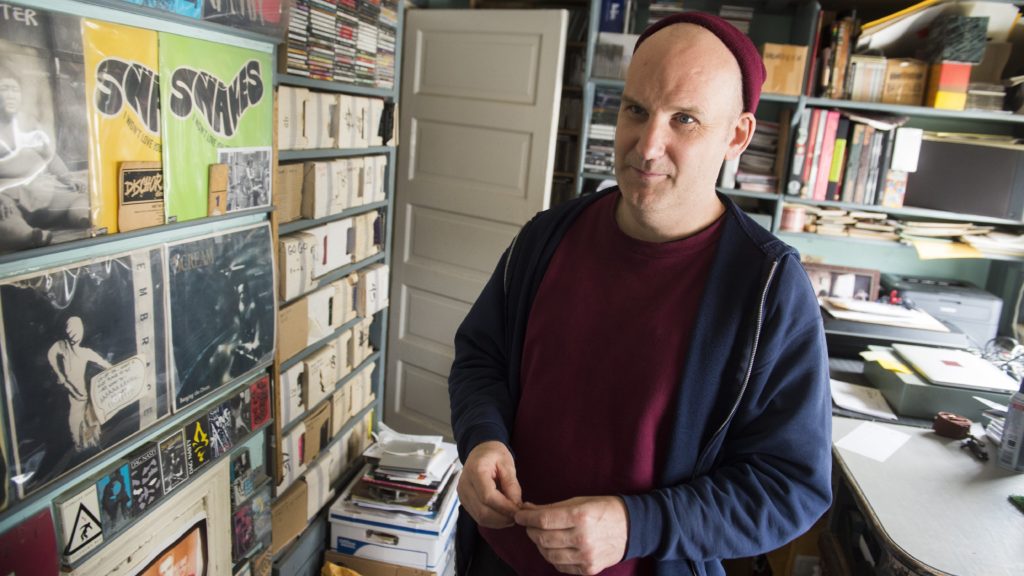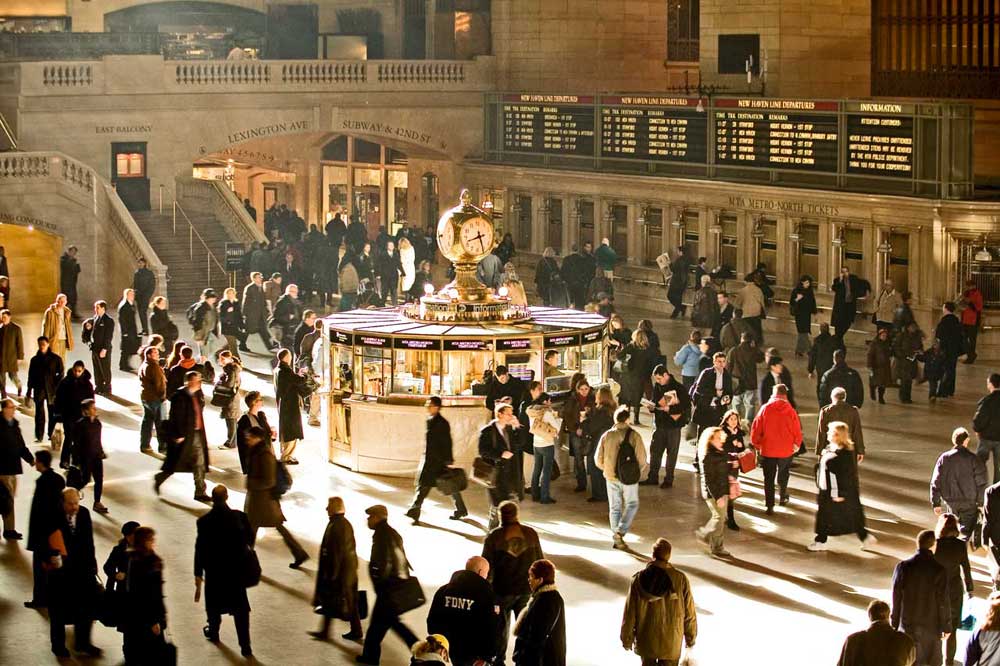
(Photo: SAUL LOEB/AFP/Getty Images)
Person: Ian MacKaye
Ian MacKaye is a DC native and founder of the independent punk and hardcore label Dischord Records. Some may call him one of the founding fathers of the DC punk and hardcore scene because of his involvement in seminal bands Minor Threat and Fugazi, and the support he offered other DC musicians through his label. Most notably, Ian MacKaye has archived the DC scene since the late 1970’s. By saving flyers, tapes, records, photographs, zines and other ephemera relating to the music scene, MacKaye took on the role of a community archivist as a teenager. Much of his collection stemmed from saving every little bit that had to do with his own bands and label, and eventually he branched out, saving much of the materials encompassing the entire DC scene.
The act of saving may have started out as a hobby or a simple habit, but as MacKaye’s collection eventually grew it became admired, recognized and most importantly, it was deemed as useful. MacKaye has been the subject of various documentaries and books, and much of his resources have been referred to, not only tell the story of his own projects, but to help shape the voice to the influential, underground, scene he helped found. This is especially important in that he saved materials that many people didn’t think to save, and so without his collection much of the story would have been lost. In 2013, he was invited to speak at the Library of Congress on his role as a citizen archivist, which was impressive considering MacKaye has no formal archival training. He has continued on his mission and has begun to digitize not only the papers from his collection, but the music as well. Much of the formats of the 1980’s are fragile cassettes, which MacKaye has been repairing and restoring to improve their sound upon digitization. Most recently he has had the help of Smithsonian archivist Nichole Procopenko to assist in the organization and proper storage of his collection.

(Photo: Frank English)
Place: Grand Central Station
Grand Central Station has a special place in many New Yorker’s hearts. It’s a majestic building full of rich history and sneaky little easter eggs like the whispering gallery. The building is a preserved gem of old New York, unlike its old counterpart on 34th street which saw its demise in 1963. There are many areas in the building worth exploring, if one has the time; I almost always discover something new when I’m passing through, whether it be a new chandelier or a Vanderbilt acorn. One of the most striking things about Grand Central aside from its aesthetics is its impressive flow of information. By observing the main concourse one can see people meeting their loved ones and scurrying toward their destinations. Although the internal systems and infrastructure that run Amtrak, Metro North and the various freight lines are behind the scenes, the central brain of the main concourse is the four faced clock with the information booth inside. Here, information is exchanged quickly and efficiently, almost rendering the large timetables as unnecessary bystanders. Within seconds, the booth’s attendants can easily tell you which of the 124 tracks you need to be on at any given time.
If you decide to skip the information booth the timetables are still reliable and easy to understand. They are organized by the five lines of the Metro North, each with color-coded headers that correspond with the colors of the map. The map design and the corresponding schedules are clean designs without a lot of clutter which makes them easy to read. This design is far less intimidating than the NYC Subway map. This is especially important for travelling visitors that will likely interact with the station during their time in New York. The placement of the central information hub and the timetables along the edges of the concourse provide for an organized system that allows ample room for people to get where they are going. Part of the charm of this station is the hustle and bustle of the people in the main concourse and it wouldn’t be as organized if there were no efficient information system to manage and maintain the crowds.

(Photo: Montclair History Center)
Thing: Directories
In 2019, directories seem pretty obsolete. Many municipalities stopped printing them altogether since most of what is needed can be found online. However, I have found directories to be quite helpful when handling research requests at the archive. On the most obvious end, a directory is helpful when handling genealogical requests, as the directories can provide proof of residency. Because these physical copies have not been digitized I am often referring back to them, so they are always at arm’s length. I find the directories to be extremely useful not only for genealogical requests but when researchers are looking for information on certain businesses. These tomes provide not only that, but an accurate snapshot of what a region’s commerce may have looked like at a specific time, as well as whether the region was more industrial, rural or urban. They can also provide a timeline of how often the same names and businesses continued to appear. Another wonderful quality of the directory is that it’s easy to use, so you don’t have to spend a ton of time looking through it.
I attended a NJ History Conference this week and directories continued to come up within a fair amount of the research presented. Many of the panelists were looking to old directories to find proof of female-owned businesses in the 19th century and for some, this was the only source where they could verify this information. The directories used by these researchers were also helpful in not only showing proof of a family’s business, but proof that these business owners also owned buildings and had tenants. Some of this is information one could easily verify with Census records, however having it confirmed in another source, one as neat as a printed directory, can be the piece of information a researcher needs. So although these books are sometimes seen as door stoppers, I would say they still have plenty of value in research settings.
Sources:
https://blogs.loc.gov/thesignal/2013/05/ian-mackaye-and-citizen-archiving/
https://sheshredsmag.com/bts-2/
https://brightestyoungthings.com/articles/ian-mackaye-interview
https://www.grandcentralterminal.com/history/
Vanessa Castaldo
Info 601-05